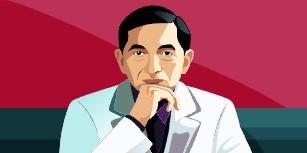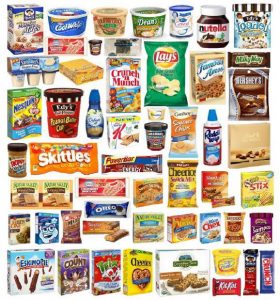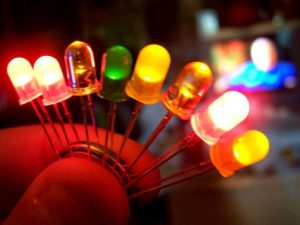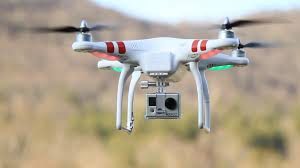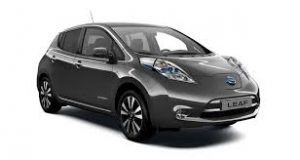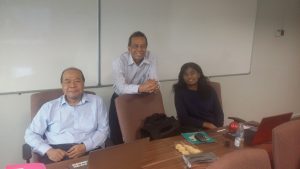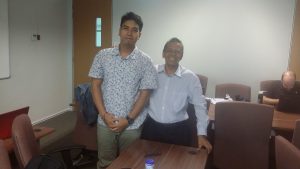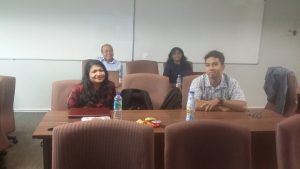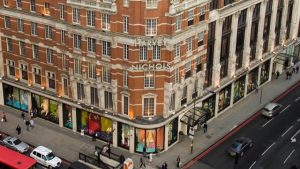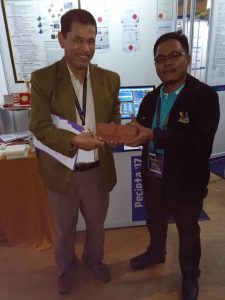The Rubber Industry Had H. N. Ridley, the Palm Oil Industry Just Had Pragmatic Planters: Part 1
Posted onIntroduction
Legend had it that four seed s of African Elaeis guineensis brought over by the Dutch into Indonesia in 1848 and planted in Bogor, Indonesia, laid the foundation for the palm industry in Malaysia and Indonesia. The two countries now produce more than eighty per cent of palm oil in the world.
The earliest record of four seedlings showed two originated from Burdoun (Reunion) or Mauritius and two from Amsterdam. The Government of Holland, who ruled Indonesia, actively promoted the usefulness of the oil palm tree and established experimental plots at Banjar Mas in Java and Palembang in Sumatra, Indonesia. It took another fifty years before an oil palm plantation was established.
The lack of enthusiasm of local authorities of Java and the doubts of planters both about the profitability and the milling methods to be employed held back the development of the oil palm industry. The technology for processing palm oil was finally invented in the early 1900s. At that time, oil palm had to compete with rubber, which was experiencing near-fever demand to make tires for cars.
The foundation of the oil plantation industry is generally attributed to one M. Adrien Hallet, a Belgian with some knowledge of oil palm in Africa. He planted oil palms of Deli origin in 1911 on a large commercial oil palm plantation in Sumatra, Indonesia. Hallet recognized the avenue palm trees growing in Deli, near Medan, Indonesia, were more productive than the palm trees in Africa and also had superior fruit composition. Within three years, 2,600 hectares of oil palm trees were planted. However, the growing of oil palm trees stagnated during the First World War.

In the meantime, another planter, M.H. Fauconnier, a Frenchman, who had been associated with Hallet, planted oil palm trees in neighbouring Malaya during 1911 and 1912 at Rantau Panjang, Kuala Selangor, Selangor. The oil palms were in full bearing by 1917 and in that year the first seedling were planted on an area later to be known as Tennamaram Estate. When we visited the estate, the first oil palm trees in Malaya were no longer there as palm oil trees grow for about thirty years. Nevertheless, the progeny of these early oil palm trees built the foundation of the globally important palm oil industry.

Other Planters Took Notice
The second commercial oil palm plantation was established by Messr. Guthrie at Sungai Buloh, near Kuala Lumpur, which was known as Elmina Estate. The first palm oil processing mill was established by Sime Darby in 1925 at the Tennamaram Estate, which extracted crude palm oil from oil palm fruits. Over the years, due to the growing population of Kuala Lumpur, Elmina Estate became a housing area, and nearby the largest prison complex in Malaysia.
In the period when rubber dominated the agriculture sector in Malaya, a few planters with an eye to overseas markets began growing the oil palm. Although palm oil was used in the manufacture of soaps, margarine, vegetable oils and grease, there was little progress in the industry. After the slump in rubber prices after the First World War, rubber planters were forced to search for alternative crops. No large-scale development occurred until 1924, when three rubber companies in the Guthrie group formed Oil Palm Malaya Ltd. The example was followed by other planters. Because of the need for capital and special expertise, especially in processing of oil palm, the industry was confined to large plantations, using the then advantage of existing rubber industry infrastructure. In addition, the oil palm, which in Africa grew naturally in riverine forests or freshwater swamps, flourished in Malaya’s tropical climate. Without pronounced dry season, Malaya was a place where an oil palm tree could be planted throughout the year..
Following table highlights the key events in the palm oil industry
| Date | Events | Impact |
| 1875 | Oil palm was introduced to Malaya as ornamental plants | The beginning of the oil palm industry |
| 1903 | First trial on planting oil palm in Batu Tiga, Selangor, by Malayan Department of Agriculture | The first agriculture research on oil palm in Malaya |
| 1910 | First commercial plantation of oil palm started in Nigeria | The start of oil palm plantation for export of crude palm oil |
| 1911 | First large-scale planting of oil palm by a Belgian company in Sumatra, Indonesia | The start of oil palm plantation in Southeast Asia |
| 1917 | First large plantings Malaya at Tennamaram Estate and Elmina Estate | The start of the commercial palm oil plantation Malaya |
| 1953 | Market pool system established by Malayan palm oil producers. Previously, palm oil was exported in drums. | The development of markets for Malayan palm by industry players to reduce shipping costs |
| 1956 | Establishment of FELDA, one of the largest palm companies in the world. | A Malayan government agency responsible to develop rubber and oil palm plantations. |
| 1961 | FELDA planted oil palm on a 350-hectare plot | This was followed by rapid expansion in areas planted with oil palm |
| 1966 | Malaysia (independent Malaya) overtook Nigeria as the world’s leading exporter of palm oil | Malaysia gained leadership in palm oil industry by pioneering many industry innovations |
| 1972 | Four palm oil refineries started operations | Start of processing industry to produce palm oil products for export markets |
| 1979 | Establishment of Palm Oil Research Institute of Malaysia (PORIM), now known as Malaysia Palm Oil Board | Start of a research institute specializing in palm oil industry |
| 1980 | Establishment of Kuala Lumpur Commodity Exchange | The exchange facilitates the trade in palm oil products |
| 1981 | Acquisition of Guthrie by Permodalan Nasional Bhd (PNB), a Malaysian government-owned investment company | The largest Brutish-owned plantation company was acquired by Malaysian interests |
| 1981 | Introduction of weevils, an insect from Cameroon, Africa, to pollinate oil palm trees | This new technique eliminates manual workers to pollinate oil palm trees. It increases the productivity of oil palm to bear fruits |
| 1999 | Guthrie established the first oil palm estate in Indonesia | The first purchase of a large piece of land in Indonesia by a Malaysian company |
| 2000 | Acquisition of a large listed plantation company in Indonesia by Guthrie | This expanded the plantation land owned by Malaysian companies. |
| 2008 | Mergers of three palm oil companies owned by PNB | Created the largest listed palm oil company in the world with more than 500,000 hectares. As a result, Guthrie ceased as a company. |
| Now | Indonesia is the largest producer of palm oil in the world | The country has more areas than Malaysia suitable for oil palm plantations |
Source: Dato’ Anuar Md Nor, The palm oil multinationals from Malaysia. Lambert Academic Publishing , 2015.
Continue in Part 2
